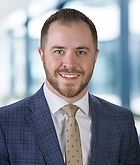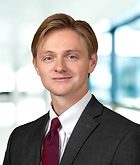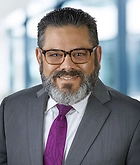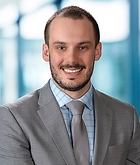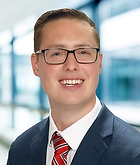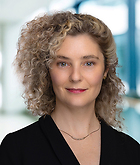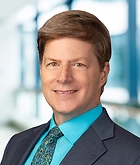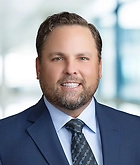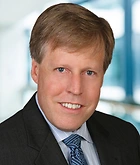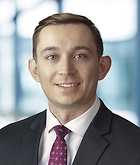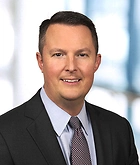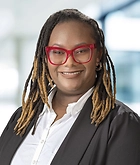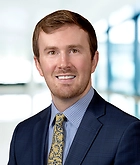The Precedent: Federal Circuit Vacates PTAB's Findings on Anticipation and Obviousness and Declines to Make First Instance Determination on the Witness’ Qualifications in Sierra Wireless v. Sisvel S.p.A.
In this edition of The Precedent, we outline the decision in Sierra Wireless v. Sisvel S.p.A.
Authored by Aaron Williams and Lauren Kickel
Overview
The Federal Circuit addressed an appeal from the USPTO Patent Trial and Appeal Board’s (the “PTAB” or the “Board”) final written decision, holding that certain patent claims were unpatentable as anticipated by and obvious in view of prior art, Sachs. The court vacated the PTAB's findings and remanded for further proceedings.
Issues
- Claim Construction: Did the plain and unambiguous language of claim 1 of U.S. Patent No. 7,869,396 (the “’396 patent”) require that a method must perform both limitations 1[c] and 1[d] when their respective preconditions are met, contrary to the Board's interpretation that these limitations are mutually exclusive?
- Substantial Evidence: Was the Board's finding that Sachs Figure 5 discloses limitation 1[c] of the '396 patent supported by substantial evidence?
- Expert Testimony: Did the Board abuse its discretion by relying on the testimony of Sisvel's expert without making a finding that he qualifies as an ordinarily skilled artisan under the Board's definition?
Holdings
- Claim Construction (Reversed): The Federal Circuit held that the plain and unambiguous language of claim 1 of the '396 patent requires performing both limitations 1[c] and 1[d] where their preconditions apply.
- Substantial Evidence (Reversed): The Federal Circuit concluded that the Board's finding that Sachs Figure 5 discloses limitation 1[c] of the '396 patent is not supported by substantial evidence.
- Expert Testimony (Reversed): The Federal Circuit determined that the Board abused its discretion by relying on expert testimony without making a finding that said expert qualified as an ordinarily skilled artisan under the Board's definition.
Background and Reasoning
Sisvel S.p.A. (“Sisvel”) owns the ’396 patent, which covers a method for data transmission and retransmission aimed at reducing data loss in wireless communication systems. The method packages data into protocol data units (“PDUs”) and uses sequence numbers to detect missing PDUs. The ’396 patent claims a variation of the automatic repeat request (“ARQ”) method: When a receiver detects a missing PDU, it starts a timer. If the PDU isn't received before the timer expires, a reception failure is reported; if the PDU is received in time, the timer is stopped. This improves transmission reliability and efficiency by ensuring missing data is either retransmitted or acknowledged promptly.
Sierra Wireless ULC, Honeywell International Inc. and Telit Cinterion Deutschland GmbH (collectively, the “Appellants”) petitioned for inter partes review (IPR), challenging all claims of the ’396 patent as anticipated by and obvious in view of International Patent Application Publication No. WO 02/091659 (“Sachs”). In a divided decision, the PTAB found claims 1, 2 and 6–8 unpatentable, and alternatively, found claims 3–5 and 9–10 were not shown to be unpatentable. The Appellants appealed the Board’s decision as to claims 3–5 and 9–10, arguing both that the Board misconstrued claim limitations of the ’396 patent and that the Board’s reliance on Sachs was not supported by substantial evidence. Sisvel cross-appealed, asserting the Board erred in invalidating claims 1, 2 and 6–8 of the ’396 patent.
On appeal, the Federal Circuit rejected the PTAB’s view that limitations 1[c] and 1[d] of claim 1 are mutually exclusive. More specifically, the Federal Circuit rejected the Board’s determination that both limitations “cannot both occur in response to the same set of stimuli.” By way of this reasoning, the Board determined that Sachs need only disclose some of the limitations at issue to anticipate the ’396 patent. In refuting the Board’s finding, the Federal Circuit noted that the PTAB’s holding goes against the canons of claim construction where, when possible, a claim should be construed on the plain and unambiguous reading of its language. The Federal Circuit emphasized the claim’s use of the term “and” as the basis for its reasoning that the claim unambiguously requires both limitations 1[c] and 1[d] be performed “where their preconditions apply.”
The Federal Circuit also ruled that substantial evidence does not support the PTAB’s finding that Sachs Figure 5 discloses limitation 1[c]. In particular, the reorder timer in Sachs is stopped when reordering finishes, not when missing PDUs are received—a key distinction that undermines the Board’s conclusions on anticipation and obviousness. The Federal Circuit noted that both the Sachs reference and evidence referenced by both parties, contrary to the Board’s finding, indicated that the Board’s finding was not supported by substantial evidence.
Lastly, the Federal Circuit found that the PTAB abused its discretion by relying on testimony from a party’s expert without determining whether the expert qualified as a person of ordinary skill in the art. The Board is considered to have abused its discretion if its decision is unreasonable or arbitrary, relies on a legal mistake, is based on clearly incorrect factual findings or lacks any supporting evidence in the record. The Board had defined a person of ordinary skill in the art for the ’396 patent as someone with “a degree in electrical engineering or a similar discipline, with at least three years of relevant industry or research experience, including experience designing or implementing wireless radio systems for data transmission and retransmission.” Sisvel’s expert lacks a technical degree and specific experience in designing data transmission methods for cellular networks, thereby failing to meet the Board’s own definition of a “skilled artisan.” The Federal Circuit determined the Board should have made explicit findings to support Sisvel’s expert’s qualification as an expert. Because of this determination, the Federal Circuit declined to decide the issue in the first instance and vacated the Board’s decision for further consideration on this point.
Gentry Smith, a member of the Vorys 2025 summer associate program, also contributed to this edition of The Precedent.

